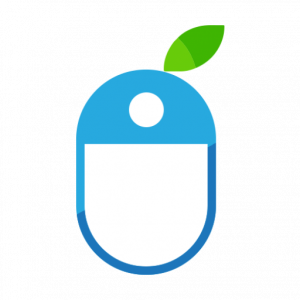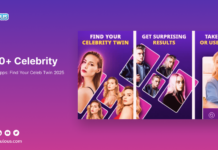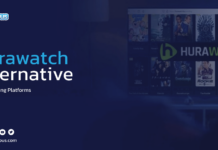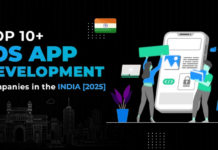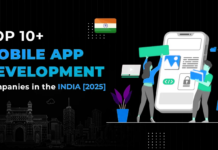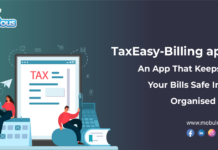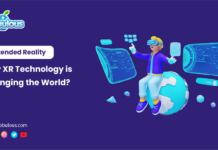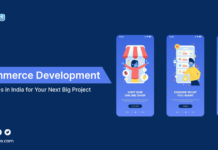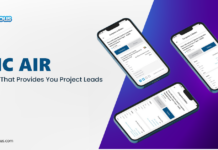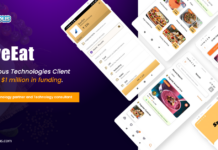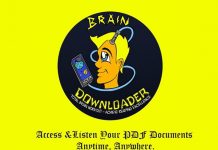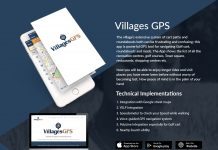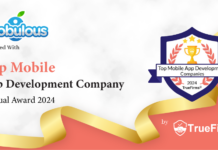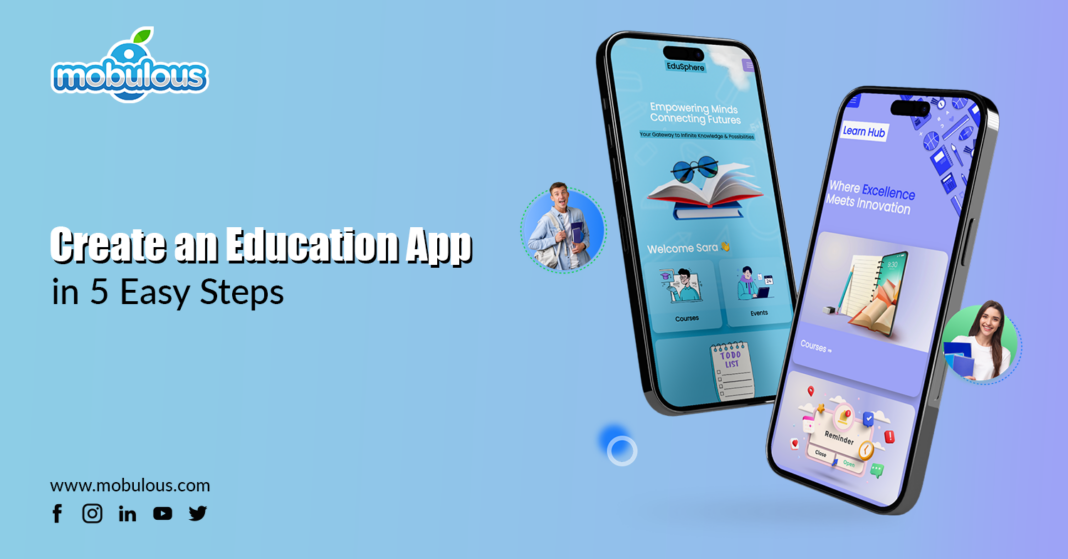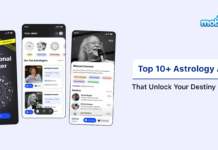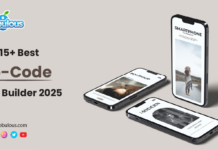Are you planning to create an education app that can boost your EdTech business ahead in today’s competitive landscape? Then go nowhere else as you have landed at the best place for your education app development.
In the 21st century, the EdTech market is growing exponentially, and building your own education app is one of the best choices you can make to help your business flourish. We all know that education isn’t confined to traditional classrooms nowadays and requires an e-learning platform to provide users with personalized learning experiences.
If you are determined to join the educational market with mobile app development and help people learn and grow, you need to learn various steps to create an app. Let’s delve into the realm of educational apps and learn everything you need to know about it.
What are Education Apps?
Education apps are software apps that are designed specifically for educational and learning purposes. These mobile applications aim to foster learning and knowledge acquisition through digital platforms and make education more accessible, personalized, and engaging for users.
These iOS/Android apps cover a plethora of subjects and educational levels that cater to students of all ages. These apps provide education from preschool to senior secondary and beyond. They offer various features and functionalities such as interactive lessons, quizzes, tutorials, study materials, etc.
Education applications may focus on specific subjects like Maths, Languages, Science, and Social Science, or provide an all-inclusive learning platform for students. Overall, these apps for education serve as beneficial tools for skill development and academic support.
Create an Education App in 5 Easy Steps
When thinking about creating an app for education, you would have often thought about “how to develop an education app?” Isn’t it?
Well, if you want to create an education app for iOS or Android that helps various students irrespective of their caste, religion, place of birth, or other factors and supports education for students from all backgrounds anytime and anywhere, you need to follow a comprehensive 5 steps. These steps are as follows:
- Plan For Your Education App.
- Design the UI/UX of the Education App.
- Create an Education App (With/Without Coding).
- Test the App.
- Launch the App on the App Store (Apple App Store/Google Play Store).
1. Plan For Your Education App
The first step to create an education app is planning and ideation. Here, you need to define your goals, identify your target audience, search for the education app development market, and define your unique value proposition. Let’s understand these in a bit more detail:
- Define Your Goals: You must start by outlining the objectives and preferences of your education app. Demonstrate whether you aim to provide supplementary learning materials, offer specialized courses, or foster communication between students and teachers.
- Identify Your Target Audience: Comprehend the demographics and educational needs of your possible users. Make sure to consider factors such as academic level, age group, geographical location, subject preferences, etc.
- Market Research: Conduct extensive market research in order to assess the demand for educational apps and identify possible competitors. Analyze existing applications in order to understand their weaknesses, strengths, and unique selling points.
- Define Your Unique Value Proposition: Demonstrate what makes your educational app different from others in the education industry. Highlight its features, functionalities, or educational approach that makes your application stand out and appeal to your target audience.
2. Design the UI/UX of the Education App
Now, comes the designing phase of your education app. In order to create an education app, UI/UX design, prototyping, and seeking feedback play a crucial role. Let’s understand this in a detailed manner:
- Design User Interface (UI): You need to create a visually appealing and immersive interface for your education app that improves the user experience. Make sure to focus on clarity and simplicity in order to ensure that users navigate the app seamlessly and access its key features without any confusion.
- Design User Experience (UX): From the perspective of users, you need to keep in mind their entire app journey from opening an app to completing specified tasks and submitting their work. Make sure to design seamless and engaged workflows and interactions that are aligned with the app’s educational objectives.
- Prototype and Feedback: Generate wireframes or interactive prototypes to visualize the app’s layout and functionality. After this, you must seek feedback from target users and stakeholders in order to specify any usability errors or areas for improvement before moving to the education app development stage.
For Assistance:- Hire a UI/UX Designer!
3. Create an Education App
After designing the UI/UX, you have to create an education app by selecting the right technology stack and developing the front-end/back-end of the app. Let’s discuss these in a comprehensive way.
- Select the Right Technology Stack: You need to select the appropriate tools, programming languages, and frameworks for app development as per your project requirements and expertise. You must consider various factors such as platform scalability, compatibility, and development time.
- Front-end Development: Now, build the user-facing elements of the education app, including navigation menus, screens, and interactive components. Make sure to bring consistency in design and functionality across multiple devices and screen sizes.
- Back-end Development: After front-end development, it comes to develop its back-end in order to support data storage, user authentication, content delivery, and other important functionalities. Ensure implementation of secure protocols and data encryption mechanisms in order to safeguard user privacy and data integrity.
- Iterative Development: For iterative development, you need to adopt an agile development approach that breaks down the application development process into manageable sprints. You need to test and refine the features of your app as per the user feedback and evolving requirements.
With Coding Education Application Development
In order to create an education app with coding, education app developers have full control over functionality and customization. They leverage programming languages such as Java, Python, or Swift to develop an education app’s potent features customized to basic educational needs.
This approach enables flexibility in the design and integration of advanced functionalities like progress tracking, interactive quizzes, and personalized learning paths. Nevertheless, it requires immense expertise in software development and involves longer development cycles.
App development with coding requires a secure platform for users where education app developers ensure scalability, security, and seamless user experience through continuous enhancement and stringent app testing methodologies.
Without Coding Education Application Development
In order to create an education app without coding, non-technical users leverage app development platforms or software tools that provide drag-and-drop interfaces and pre-built app templates.
These app development platforms enable quick prototyping and deployment of educational applications without any requirement for programming skills. Users are able to customize layouts, integrate basic features/functionalities, and add content with the help of immersive visual editors.
This approach offers simplicity and accessibility but brings several limitations as well in terms of advanced features and flexibility. Non-coders need to prioritize content quality, user experience, and compatibility with multiple devices and platforms in order to ensure the app’s efficiency and user satisfaction.
4. Test the App
After creating an educational app, you need to test it thoroughly in order to identify and resolve bugs, errors, and glitches. Make sure to test your education app comprehensively to make it bug-free. For this, you need to consider Quality Assurance (QA) testing, User Acceptance Testing (UAT), and Accessibility testing.
- Quality Assurance (QA) Testing: In order to create an education app perfectly and without any glitches or bugs, it requires rigorous QA testing. With this, you find and resolve bugs and errors in the app. Make sure to perform functional testing, performance testing, and regression testing across various devices, network conditions, and operating systems in order to make your education app bug-free.
- User Acceptance Testing (UAT): You must involve target users in the testing process in order to evaluate the usability and functionality of the app. Seek user feedback and insights in order to validate assumptions and make the best decisions for further enhancements.
- Accessibility Testing: You must ensure that the education app is accessible to users with disabilities by testing for compliance with accessibility guidelines. After this, verify support for assistive technologies and implement features like voice commands and screen readers.
5. Launch the App on the App Store
Lastly, you must launch the app on the App Store (Apple App Store/Google Play Store). For this, you must keep in mind App Store Submission, Marketing and Promotion, and Monitor the education app. Let’s learn these in an elaborate manner.
- App Store Submission: Prepare the required documentation, metadata, and assets that are mandatory for App Store submission. You must follow the guidelines of the respective App Stores (Google Play Store/Apple App Store) in order to ensure compliance and a smooth approval process.
- Marketing and Promotion: Make sure to build a detailed marketing strategy in order to generate buzz and attract users to download the mobile app. Make use of social media, press releases, email campaigns, and partnerships with educational institutions or influencers to reach your target audience hassle-free.
- Monitor and Iterate: After launching the educational app on the App Stores, you need to monitor user feedback, performance metrics, and app analytics in order to identify areas for improvement and optimization. You must iterate continuously on the educational app as per user insights, market trends, and feedback from App Store reviews.
Choose the Right Technology Stack to Create an Education App
Selecting the right technology stack is crucial for creating a successful education app. Well, technology stack refers to the blend of programming languages, libraries, frameworks, and tools that are used in order to create an educational app. Here are some key considerations when selecting the right technology stack for creating an education app.
1. Platform Compatibility
Decide whether you want to develop a native app for specific platforms like Android or iOS or opt for a cross-platform solution. There are some popular frameworks like Flutter or React Native that enable the development of education apps and run seamlessly on different platforms, hence reducing development time and costs.
For Assistance:- Hire a Back-end Developer!
2. Back-end Infrastructure
Choose a back-end technology stack that can manage user authentication, content delivery, data storage, and other important functionalities effectively. Some of the popular choices include Django, Node.js, Firebase, or Ruby on Rails for real-time database potential.
3. Front-end Development
You must choose technologies that allow you to create a responsive and user-centric interface. HTML, JavaScript, and CSS are crucial for web-based education apps and frameworks like Angular, Vue.js, or React offer robust tools for developing dynamic user interfaces.
4. Database Management
You need to demonstrate the database technology that is best suited for storing and retrieving application data. In this, options range from relational databases such as MySQL or PostgreSQL to NoSQL databases like MongoDB or Firebase Firestore based on the app’s requirements for scalability, app performance, and data structure.
5. Security Considerations
You must prioritize security measures in order to safeguard user data and ensure compliance with privacy regulations. Therefore, you must implement secure authentication mechanisms, secure communication, and data encryption protocols by leveraging libraries and frameworks like JWT, OAuth, or SSL/TLS.
6. Scalability and Performance
Select technologies that scale with the app’s growing user base and ensure optimal app performance under heavy loads. You must consider cloud services like AWS, Microsoft Azure, or Google Cloud Platform for scalable resources and infrastructure.
7. Community Support and Documentation
You need to opt for technologies with extensive documentation, active developer communities, and potent support resources. Make sure to get access to forums, tutorials, and online communities that can assist developers in troubleshooting issues, accelerate education application development, and stay updated on best practices.
15 Must-Have Features in Education Apps
From interactive lessons to continuous updates and support, education apps should have various necessary features. Let’s learn all the must-have features of an educational app in a comprehensive way.
1. Interactive Lessons
Interactive lessons engage students with interactive and appealing content like animations, videos, quizzes, simulations, etc within the education app in order to foster active learning and retention.
2. Progress Tracking
This feature provides tools for learners to keep up with their progress. This includes assessments, progress reports, and quizzes. It enables learners and educators to monitor their learning journey and identify areas for enhancement.
3. Personalized Learning Paths
This feature offers students a personalized learning experience customized to their abilities, preferences, and learning pace via adaptive algorithms and tailored content recommendations.
4. Collaboration Tools
Collaboration tools within education applications facilitate collaboration and communication among students and teachers with features like group projects, discussion forums, video conferencing, and messaging.
5. Offline Access
Offline access allows users to access educational content and resources. This enables them to study and learn anytime and anywhere, even in areas with limited or no internet connectivity.
6. Accessibility Features
Accessibility features in educational apps ensure inclusivity by integrating accessibility functionalities in the apps. This includes screen readers, voice commands, subtitles, and adjustable font sizes in order to accommodate users with different requirements.
7. Feedback and Assessment
This feature allows teachers to provide feedback on student performance via assignments, assessments, and grading tools. This fosters continuous enhancement and evaluation.
8. Parental Controls
The parental control feature provides parents with visibility to the progress of their child and activities within the mobile app. This includes setting learning goals, monitoring performance, and managing access permissions.
9. Gamification Elements
Gamification components improve user engagement and motivation, including rewards, badges, achievement levels, scores, results, leaderboards, etc. This encourages and motivates students to active participation and learning.
10. Content Library
This feature curates an extensive library of educational resources. This includes videos, textbooks, articles, and interactive tutorials that cover a plethora of topics and subjects.
11. Cross-Platform Compatibility
Cross-platform app compatibility ensures compatibility across various platforms and devices. This includes smartphones, browsers, tablets, and desktop computers in order to reach a wide audience of learners.
12. Data Security and Privacy
Data security and privacy is a crucial feature of an education app that implements potent security measures in order to safeguard user data and ensure compliance with data protection regulations. It basically includes secure authentication, encryption, and data anonymization.
13. Teacher/Administrator Tools
Administrator tools provide teachers and administrators with options to create and manage courses, assignments, lesson plans, and assessments. This streamlines workflows and administrative tasks.
14. Real-Time Analytics
This feature offers insights into student performance, learning outcomes, and engagement via real-time analytics and dashboards. This enables educators to make data-driven decisions and interventions.
15. Continuous Updates and Support
This feature helps you update the mobile app regularly with the latest features, enhancements, and content as per user feedback and emerging educational trends, and provides continuous technical support in order to address user issues and inquiries.
How Long Does it Take to Create an Education App?
An education app typically takes 600 hours to develop on average. However, it can be built in less than or more than 600 hours depending on the complexity of your app. As a result, we have mentioned an estimated timeline to create an education app.
| Features | Back-end Development | Android Development | iOS Development |
| Learner Features | 600 Hours | 400 Hours | 400 Hours |
| Educator Features | 800 Hours | 500 Hours | 500 Hours |
| UI/UX Design | – | 180 Hours | 180 Hours |
| Quality Assurance & Testing | – | 500 Hours | 500 Hours |
| Project Management | – | 270 Hours | 270 Hours |
How Much Does it Cost to Create an Education App?
The cost to create an education app varies depending on various factors like the complexity of an app, features/functionalities added, location of the development team, etc.
In order to understand per hourly charges of developers for specific locations like the USA, Canada, Australia, Europe, and India, you must consider the below table carefully.
| Country | Per-Hour & Location-Based Cost to Create an Education App |
| India | $25 to $50/hour |
| Europe | $60 to $80/hour |
| Australia | $90 to $130/hour |
| Canada | $90 to $130/hour |
| The USA | $100 to $150/hour |
Education App Development Market 2024 and Beyond
The market size of e-learning app development continues to grow at a rapid pace. Let’s see the top 6 statistics related to create an education app for students and administrators. These stats are mentioned below one by one.
- As per the reports issued by Global Market Insights, the market size of education apps is predicted to reach $1 Trillion by 2027.
- Markets and Markets have predicted that North America will have the largest market for education apps between 2020 to 2025.
- As per Statista, the USA will have an estimated revenue for online education apps that has been anticipated to reach USD 74.80 Billion+ in 2024.
- According to the reports published by HolonIQ, Edutech is growing at 16.3% and is expected to grow at a rate of 2.5x between 2020 to 2025.
- According to the studies, the top education apps like Duolingo have received a total funding of USD 183.3 Million from over 12 investors.
- A report by Statista states that the Apple App Store has given the third-most popular category to education with a share of 8.7%.
Final Takeaway
When it comes to create an education app, patience and consistency are the keys. With the steps mentioned above, you are able to create a perfect education app for your business to take a propelling growth.
After reading this blog, you would have understood that various companies are looking to create an education app for themselves so that they can stay ahead of the curve in the competitive landscape.
Therefore, you must seek help from an experienced education app development company like Mobulous which can guide you bountifully. Contact us and discuss the requirements of your project today!
Frequently Asked Questions
Q. What is the concept of educational app?
Ans. Any mobile software or a remote learning platform is known as an educational app. This blended learning system delivers extensive knowledge and end-to-end learning solutions to learners anytime and anywhere.
Q. How to create an education app?
Ans. In order to create an education app, you need to follow the below steps carefully:
- Plan for your education app.
- Design the UI/UX of your education app.
- Create an Education app (With/Without coding).
- Test the App.
- Launch the app on the App Store (Apple App Store/Google Play Store).
Q. How much does it cost to build an educational app?
Ans. The cost of creating an education app ranges from USD 25 – USD 50 per hour in India to USD 100 – USD 15 per hour in the USA. The cost to create an education app varies depending on the complexity of the app, features/functionalities added, location of the developer team, expertise, etc.
Q. What are the features of a study app?
Ans. Some important features of an education app are as follows:
- Interactive lessons
- Progress tracking
- Offline access
- Parental controls
- Gamification elements
- Content Library
Q. Is EdTech profitable?
Ans. The global EdTech market is predicted to boost from its valuation of USD 74.2 Billion in 2021 to USD 288.4 Billion in 2031. This represents a Compound Annual Growth Rate, i.e., a CAGR of 14.5%. Hence, if you are planning to launch an EdTech startup, this is the best time for you.
